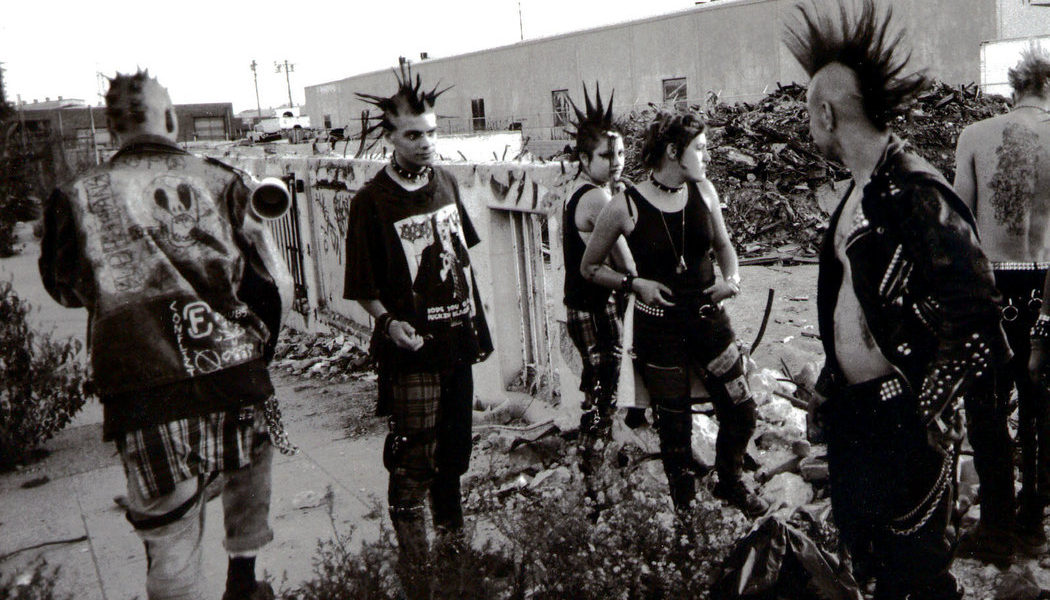Penelope Spheeris Turns Her Camera on Punk’s Lost Children
#46: THE DECLINE OF WESTERN CIVILIZATION III/1998
DIRECTOR: PENELOPE SPHEERIS
 Last spring I reviewed Penelope Spheeris’s funny, anarchic documentary on the early L.A. punk scene, The Decline of Western Civilization (1981). The punk scene on display was full of violence and excess, marred by misogyny and racism, and yet still funny, vibrant and full of a certain kind of promise (or was it a threat?). Seven years later Spheers released The Decline of Western Civilization II: The Metal Years. The documentary was equally entertaining, even if the focus was less on the music and more on musicians’ lust for sex, drugs and stardom.
Last spring I reviewed Penelope Spheeris’s funny, anarchic documentary on the early L.A. punk scene, The Decline of Western Civilization (1981). The punk scene on display was full of violence and excess, marred by misogyny and racism, and yet still funny, vibrant and full of a certain kind of promise (or was it a threat?). Seven years later Spheers released The Decline of Western Civilization II: The Metal Years. The documentary was equally entertaining, even if the focus was less on the music and more on musicians’ lust for sex, drugs and stardom.
After another 10 years Spheeris wrapped up her Decline trilogy and this time Spheeris shifted her attention again. The Decline of Western Civilization III may begin the same way – with a montage of musicians reading the crowd-likeness release at live shows – and there’s the obligatory egg-frying scene. But that’s about where similarities end. Spheeris spends some time with punk bands (Final Conflict, Litmus Green, Naked Aggression, The Resistance), but this doc is really about the grubby, battered kids in the mosh pit. And they are kids. Spheeris asks fans waiting to get into a show how old they were when The Decline of Western Civilization came out. Most report they that weren’t born, or were babies. Or, as one scrawny boy replies, “I was an abortion that couldn’t get paid for.”
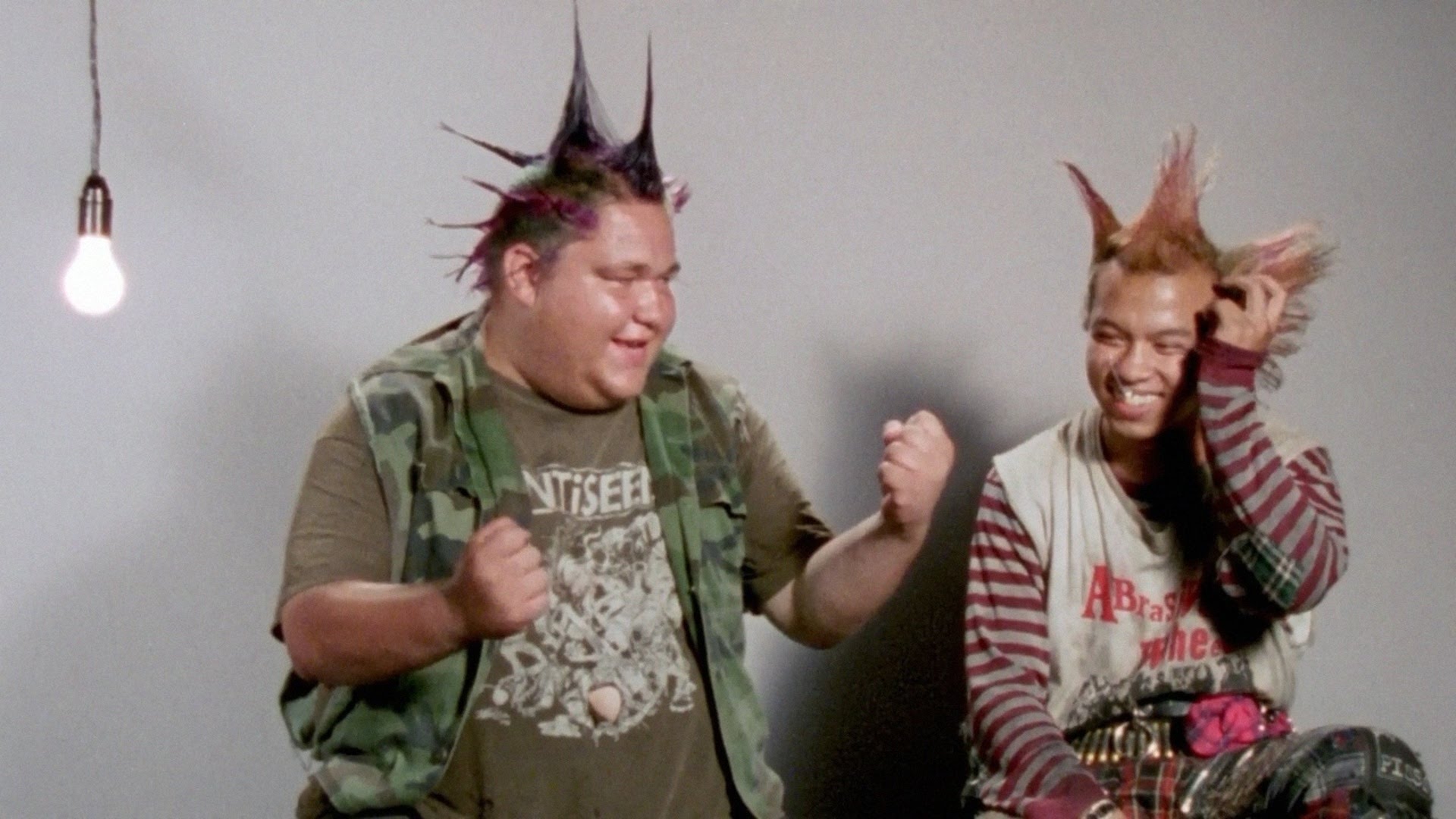 In my review of The Decline of Western Civilization I mentioned the “softening” of punk that took place in the years after Penelope Spheeris made her first film. One could acquire the punk “look” at the mall. No need to spend all of that time customizing your own leather jacket when you can get it ready made at Hot Topic; no need to risk infections from homestyle tattoos and piercings when there are squeaky clean body art parlors in every trendy neighborhood.
In my review of The Decline of Western Civilization I mentioned the “softening” of punk that took place in the years after Penelope Spheeris made her first film. One could acquire the punk “look” at the mall. No need to spend all of that time customizing your own leather jacket when you can get it ready made at Hot Topic; no need to risk infections from homestyle tattoos and piercings when there are squeaky clean body art parlors in every trendy neighborhood.
The kids that Spheeris interviews and observes in The Decline, III are not part of that punk-light movement. They’re still making their own jackets, thank you. The safety pin through one kid’s nose was put there by a friend, at a party. A young girl shows the half circle of festering cigarette burns around her upper arm and says she plans to finish the ring soon. Spheeris is amazingly even-keeled in her interview style, but she still can’t avoid suggesting that this girl might want to put some antibiotic ointment on those burns. Why doesn’t she?` Because self care is the last, the very last thing that seems to concern these kids.
Spheeris treats her subjects with dignity by not patronizing, not pitying, but not looking away, either. That’s especially tough given the circumstances of their lives.
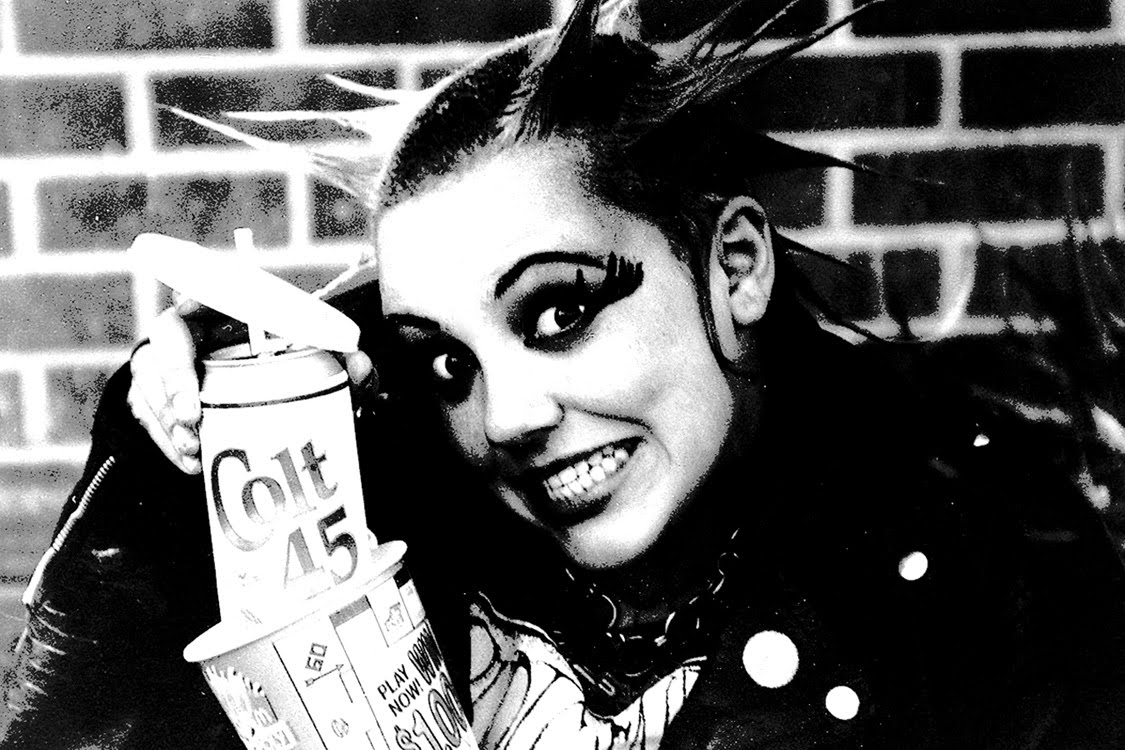 Penelope Spheeris eases the viewer into realizing just how bad things are for these baby faced “gutter punks”, homeless kids living in squats or on the streets of L.A., panhandling for beer money. She introduces us to them with her signature single lightbulb interviews; kids with nicknames like Spoon, Squid, Hamburger, Little Tommy the Queer, and Why Me. They range from their mid-teens to early 20s, many of them still soft featured and rosy cheeked. With few exceptions, they are without hope for the future, without any desire for more than their continued day to day quest to get drunk and stay drunk. I reviewed a drama about homeless teens a couple of years back (Sugar), but the reality onscreen in The Decline, III is much worse than that fictionalized account.
Penelope Spheeris eases the viewer into realizing just how bad things are for these baby faced “gutter punks”, homeless kids living in squats or on the streets of L.A., panhandling for beer money. She introduces us to them with her signature single lightbulb interviews; kids with nicknames like Spoon, Squid, Hamburger, Little Tommy the Queer, and Why Me. They range from their mid-teens to early 20s, many of them still soft featured and rosy cheeked. With few exceptions, they are without hope for the future, without any desire for more than their continued day to day quest to get drunk and stay drunk. I reviewed a drama about homeless teens a couple of years back (Sugar), but the reality onscreen in The Decline, III is much worse than that fictionalized account.
Spheeris took just the right approach in interviewing the kids featured in this film. She uses a rapid fire, almost harsh delivery for questions as inoffensive as “How long have you been a punk fan?” to potential landmines like “What did your dad beat you with?” There is nothing tender or sympathetic in her tone; just a straightforward commitment to letting these castoffs tell their stories. Spheeris treats her subjects with dignity by not patronizing, not pitying, but not looking away, either. That’s especially tough given the circumstances of their lives. There’s a fair bit of vomit and public urination on display in The Decline, III. One of the boys tells Spheeris that he hasn’t showered in a month and a half, and I found it hard not to wonder what it must have smelled like inside the squats that these kids often occupy. It’s the sort of immersive experience that leaves you feeling like maybe you need a shower after watching it.
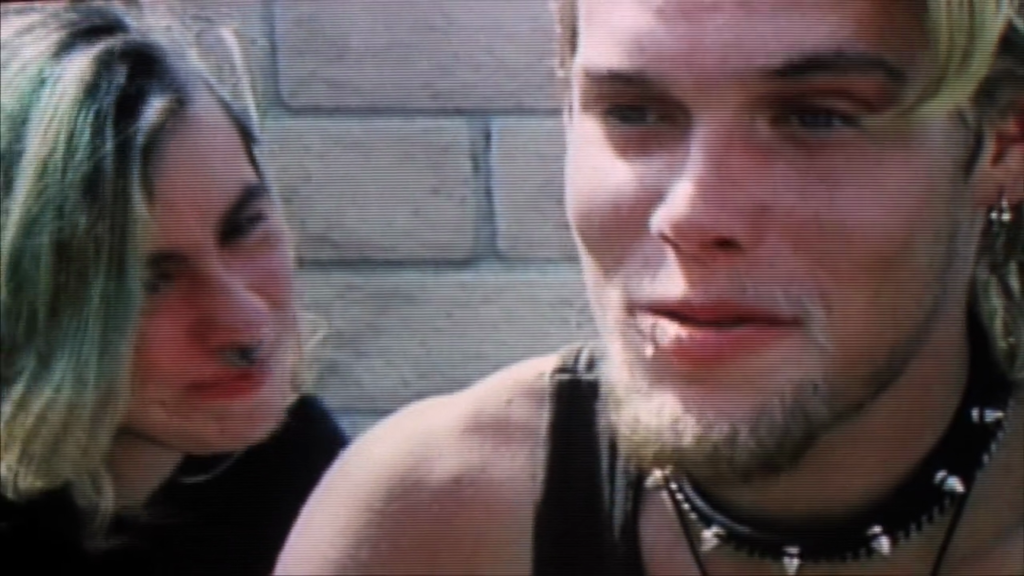 As for the punk music scene itself, the concert footage is joyless, even by the admittedly strange standards of punk. The political messaging is strident but superficial. I appreciated Spheeris’s interviews with the members of Naked Aggression – who turn out to be serious musicians and social activists offstage. It gave me more patience with the live footage of their pro-choice anthem, which was so heavy handed it was almost parody.
As for the punk music scene itself, the concert footage is joyless, even by the admittedly strange standards of punk. The political messaging is strident but superficial. I appreciated Spheeris’s interviews with the members of Naked Aggression – who turn out to be serious musicians and social activists offstage. It gave me more patience with the live footage of their pro-choice anthem, which was so heavy handed it was almost parody.
You can understand, listening to kids in The Decline, III, why they are drawn to punk. They are outsiders looking for a place where being an outsider is a still a badge of honor, and the nihilistic anger in punk matches their lived experiences. As Spheeris learns over time, these are children who have been abused and abandoned by their families and who are treated as invisible by most of society. Even believing they will be alive in five years is more optimism than most of them can muster. And by the way, not everyone makes it through the documentary alive. I have no idea what happened to these kids after the doc was finished, but it seems like long odds that the rest of them are still with us.
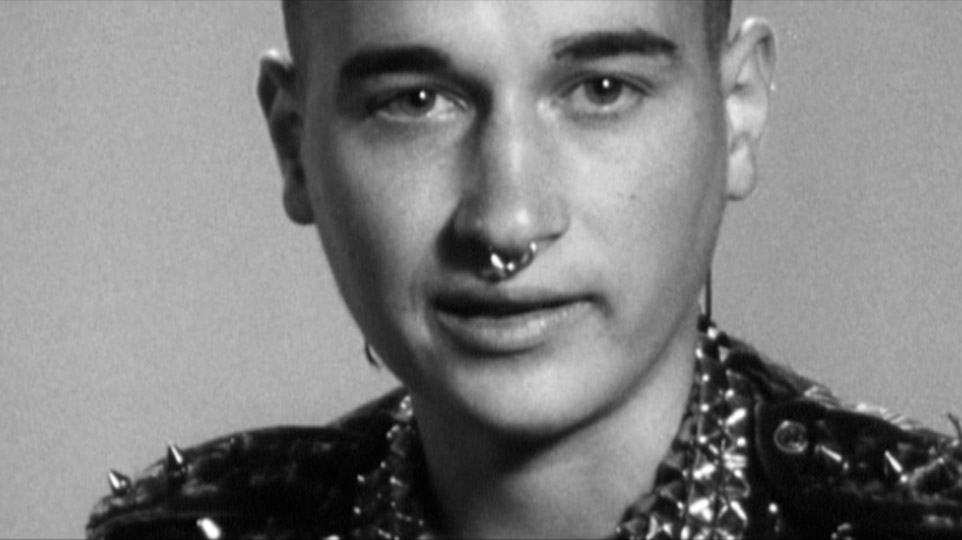 The Decline of Western Civilization III is painful viewing. As badass as some of these kids tried to appear, there are cracks in their cover now and then. They try (and sometimes fail) to take care of each other, having formed families to replace those that threw many of them away. A few of them even adopt dogs, causing Spheeris to ask one young man how he can possibly take care of a dog when he’s homeless. The closest that Spheeris ever comes to pressing at their emotional wounds is asking several of them, when discussing abuse, or their own hopelessness, “Does that make you sad?” There’s never a stronger word than “sad”, and only some of the kids are even willing to admit to that much. Still, despair permeates this film. Spheeris’s unflappable interview style is all that keeps it at bay, and even she admits that the film changed her life – motivating her to become a foster parent and to try to raise money both for homeless shelters and organizations for abused children.
The Decline of Western Civilization III is painful viewing. As badass as some of these kids tried to appear, there are cracks in their cover now and then. They try (and sometimes fail) to take care of each other, having formed families to replace those that threw many of them away. A few of them even adopt dogs, causing Spheeris to ask one young man how he can possibly take care of a dog when he’s homeless. The closest that Spheeris ever comes to pressing at their emotional wounds is asking several of them, when discussing abuse, or their own hopelessness, “Does that make you sad?” There’s never a stronger word than “sad”, and only some of the kids are even willing to admit to that much. Still, despair permeates this film. Spheeris’s unflappable interview style is all that keeps it at bay, and even she admits that the film changed her life – motivating her to become a foster parent and to try to raise money both for homeless shelters and organizations for abused children.
This documentary doesn’t show the inevitable decaying product of the punk scene, marred though that scene is by casual violence and self-destructiveness. Punk wasn’t the problem for these children; our children. It was “respectable” society that threw them away, and the punk scene that provided home and community.


